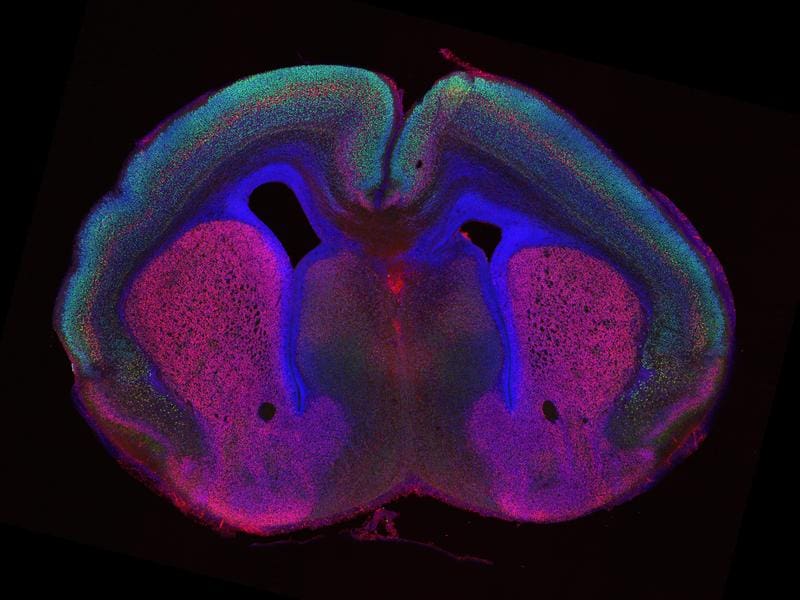New study reveals mechanisms of brain fold formation
In a study, researchers at the Max Planck Institute for Biological Intelligence have gained new insights into the formation of folds in the cerebral cortex, which occur in humans and some animal species such as primates, whales, dolphins and pigs.
These folds, consisting of furrows and elevations, increase the surface area of the brain and are associated with higher cognitive abilities such as language, memory, creativity, and planning. The study shows that wrinkle formation is influenced by a combination of cell migration, cell adhesion and the number of certain nerve cell types.

In the normally smooth mouse brain, wrinkles were created by genetic changes by reducing the adhesion of nerve cells and increasing the number of progenitor cells from which nerve cells arise. These modifications led to complex patterns of furrows and elevations in the cerebral cortex. The researchers found that the type of progenitor cells determines the shape of the folds: an increase in so-called intermediate progenitor cells promotes the formation of furrows, while an increase in apical progenitor cells in the early stages of development promotes the formation of elevations.
The results are based on experiments with special mouse models, single-cell sequencing and computer simulations. Earlier work by the team had already shown that adhesion molecules, which help nerve cells adhere to each other, influence cell migration and that grooves form in the mouse cortex when they malfunction. The new findings indicate that the combination of cell growth, cell density and migratory behavior shapes the characteristic structures of the cerebral cortex. These findings provide clues to the evolution, function and health of the brain and could inspire future research into the causes of individual differences in the folding patterns of the cerebral cortex. Such differences could shed light on the connections between brain shape, cognitive abilities and diseases.
Original Paper:
Cortex Folding by Combined Progenitor Expansion and Adhesion-Controlled Neuronal Migration
Seung Hee Chun, Da Eun Yoon, D. Santiago Diaz Almeida, Mihail Ivilinov Todorov, Tobias Straub, Tobias Ruff, Wei Shao, Jianjun Yang, G├Čn├╝l Seyit-Bremer, Yi-Ru Shen, Ali Ert├╝rk, Daniel del Toro, Songhai Shi, and R├╝diger Klein
Nature Communications
Editor: X-Press Journalistenb├╝ro GbR
Gender Notice. The personal designations used in this text always refer equally to female, male and diverse persons. Double/triple naming and gendered designations are used for better readability. ected.




